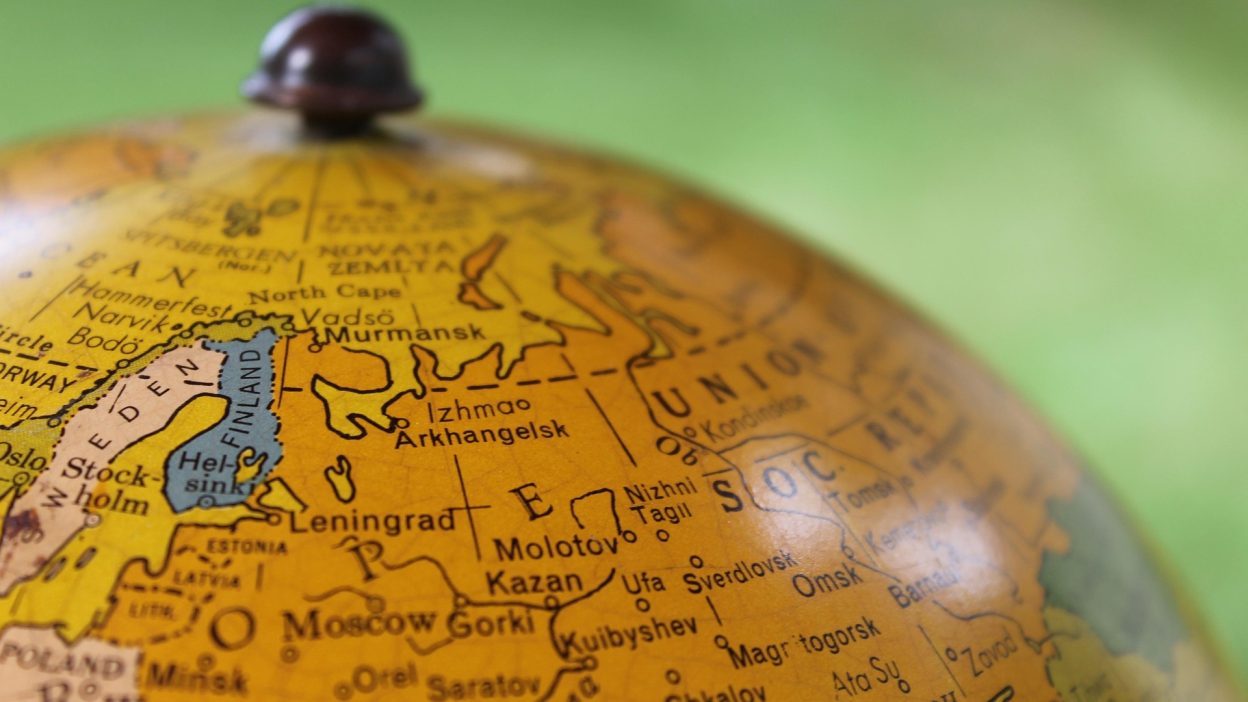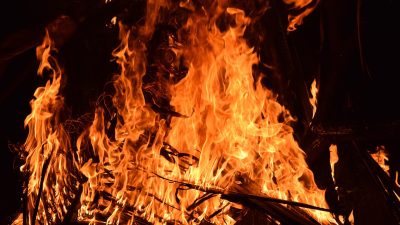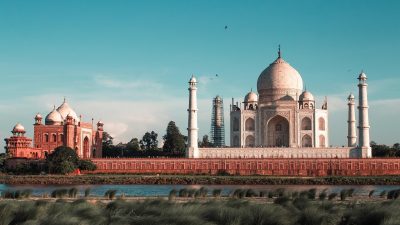The Inferno That Devoured China and the Soviet Union
In May 1987, one of the most devastating wildfires in modern history erupted, reducing vast stretches of forest in northeastern China and Siberia to ashes. Known as the Black Dragon Fire, it obliterated over 18 million acres of land, wiping out entire towns and killing hundreds.
This was no ordinary wildfire—it was a disaster fuelled by human recklessness, environmental destruction, and government inaction. While both China and the Soviet Union suffered enormous losses, their contrasting responses and attempts to control the narrative raised troubling questions.
Did this catastrophe have to happen? Could the scale of devastation have been reduced? And why does the risk of another fire like this still loom over us today?
Let’s delve into the full horror and consequences of the Black Dragon Fire.
1. The Perfect Storm: How the Black Dragon Fire Became Unstoppable
The Black Dragon Fire wasn’t just a random wildfire—it was a man-made disaster that spiralled out of control due to a combination of dangerous environmental conditions and human negligence.
A ticking time bomb waiting to ignite
The spring of 1987 was marked by severe drought across northeastern China and Siberia. With almost no rainfall for months, the forests became dangerously dry and flammable. On top of that, unseasonably strong winds reaching 110 km/h created the perfect conditions for a wildfire to spread at lightning speed.
Human exploitation turned nature into a deathtrap
Logging had stripped forests of their natural resistance to fire. Vast piles of dry wood, discarded timber, and dead trees littered the area, creating millions of tons of fuel for a fire to consume. China’s aggressive deforestation policies had weakened the forest’s ecosystem, turning it into a powder keg waiting for a spark.
Once ignited, the fire was unstoppable
A single spark—allegedly caused by a careless worker in a logging town—was all it took for the fire to explode into an unstoppable inferno. Within a few hours, flames had spread across hundreds of kilometres, consuming entire villages, forests, and farmlands.
2. China vs. Soviet Union: A Disaster, Two Different Narratives
While both China and the Soviet Union suffered from the fire, their response strategies, losses, and attempts to control the narrative were vastly different.
China’s failures: Profits over safety
For years, China had been ruthlessly exploiting its forests to fuel economic growth. Government policies prioritised timber production over environmental safety, which left behind barren landscapes littered with dry wood debris—an ideal breeding ground for wildfires.
When the fire broke out, China’s response was slow and disorganised. Firefighters lacked modern equipment, and the authorities underestimated the severity of the disaster, delaying evacuation efforts.
The Soviet Union’s negligence: A catastrophe ignored until it was too late
On the Soviet side, the fire could have been controlled early—but wasn’t. Soviet officials were slow to act, misjudging the fire’s speed and intensity. When they finally responded, their firefighting efforts were outdated and poorly coordinated, leading to massive losses.
Instead of admitting their failures, both governments tried to minimise the extent of destruction, leading to misleading statistics and censored information.
3. Death, Devastation, and Chaos: The Fire’s True Cost
The official death toll remains heavily disputed, with conflicting reports from different sources.
- Death toll uncertainty
China reported around 200 deaths, but eyewitness accounts suggest the real number was significantly higher. Many remote villages were completely erased, leaving no records of the missing. - Tens of thousands injured and displaced
Burn victims and survivors with severe smoke inhalation were left without adequate medical aid. An estimated 50,000 people lost their homes and were forced to live in makeshift shelters. - Environmental annihilation
Over 18 million acres of land were destroyed, along with countless species of wildlife, plants, and entire ecosystems. The smoke cloud covered vast regions, affecting air quality and weather patterns for weeks.
Certainly! Here’s the continuation of the reworded blog with headings 4-10 and FAQs in paragraph format (except heading 7 which remains in bullet points).
4. Surviving the Inferno: What It Was Like to Witness the Black Dragon Fire
For those who were trapped in the path of the Black Dragon Fire, the experience was nothing short of hellish. Survivors recounted how the sky turned completely black, filled with thick smoke that rendered it almost impossible to breathe. The heat was unbearable, and the intense flames consumed everything in their path.
One survivor described how the fire seemed to move faster than the wind itself. Entire villages were engulfed in seconds, with buildings, trees, and even wildlife disappearing into the flames without a trace. As people tried to escape, they were forced to make desperate decisions, running through fields of fire to reach safety. The panic and chaos of trying to survive was amplified by the severe lack of resources and aid—many found themselves abandoned by authorities who were slow to react.
Firefighters, too, were in a race against time. Though many risked their lives to fight the fire, their efforts were thwarted by outdated equipment and a lack of coordination. Many lost their lives trying to contain the flames while others were forced to retreat as the inferno continued its unstoppable advance. The fires left behind a trail of devastation, with many people losing everything they owned.
5. Economic and Environmental Collapse: The Fire’s Aftermath
The economic impact of the Black Dragon Fire was devastating for both China and the Soviet Union. Billions of dollars worth of timber was lost in the flames, and the logging industry that depended on those forests was effectively crippled. For China, this fire further highlighted the unsustainable nature of its aggressive deforestation policies. In the wake of the fire, both countries faced long-term economic challenges, as they scrambled to rebuild infrastructure and deal with the loss of livelihoods for many individuals who had relied on the forest for income.
Environmental destruction was similarly catastrophic. Over 18 million acres of forest were destroyed, and many unique ecosystems were permanently damaged. Wildlife that depended on these forests for survival were left to either flee or perish. Biodiversity in the affected areas suffered as entire habitats were wiped out, and reforestation efforts in the aftermath were slow and insufficient to restore what had been lost. The long-term impact on the environment was felt for decades, as many areas remained scarred and unable to recover fully from the massive destruction.
6. Ignored Warnings: Why This Fire Should Have Never Happened
One of the most tragic aspects of the Black Dragon Fire was that it could have been avoided. Forestry experts had been warning about the risks of deforestation for years, particularly in the northeastern regions of China and Siberia. However, government officials in both China and the Soviet Union largely ignored these warnings, prioritising economic growth over environmental protection.
Both countries had been depleting their forests at an alarming rate for decades, and the lack of proper fire management protocols made these areas even more vulnerable to wildfires. In hindsight, it’s clear that failure to implement fire safety measures and sustainable logging practices contributed directly to the catastrophe. If preventive actions had been taken, it’s possible that the Black Dragon Fire would not have reached the catastrophic proportions it did.
Furthermore, both countries lacked a coordinated response when the fire broke out. Firefighting efforts were often disjointed, with inadequate resources and outdated firefighting technology. This lack of preparation turned what could have been a manageable wildfire into a massive disaster.
7. Political Cover-Ups: The Truth the Governments Didn’t Want the World to Know
- China and the Soviet Union both downplayed their failures
After the fire, both governments attempted to downplay the scale of the disaster. Official reports from both China and the Soviet Union underreported the number of deaths and the extent of the damage. They were particularly keen to avoid international scrutiny and prevent any embarrassment that would reflect poorly on their leadership. - Cold War propaganda affected disaster response
The Cold War was in full swing during the time of the fire, and both China and the Soviet Union were concerned about maintaining their public image. The Soviet Union, for example, censored media coverage of the fire, choosing to withhold information from the world to avoid appearing weak. Meanwhile, China opted to downplay the fire’s impact by adjusting the official death tolls and dismissing the scale of the environmental damage. These actions delayed the global response to the crisis and obscured the truth from those who could have helped.
8. Have We Learned Anything? Why Wildfires Are Still Getting Worse
Despite the devastating lessons of the Black Dragon Fire, the truth is that wildfires today are becoming more frequent and more destructive. As climate change accelerates, the risks associated with wildfires have grown exponentially. Rising temperatures, drought conditions, and unpredictable weather patterns are contributing to the increasing severity of wildfires across the globe.
Furthermore, deforestation continues to be a significant issue, particularly in tropical regions. As forests are cleared to make way for agriculture and urban expansion, the natural barriers that prevent wildfires from spreading quickly are being erased. The Black Dragon Fire is a stark reminder that unchecked human activity can have catastrophic consequences.
Despite advances in firefighting technology and prevention strategies, much of the world is still not adequately prepared for the growing threat of wildfires. Governments and international organisations must work together to create effective solutions for managing wildfires, focusing on prevention, mitigation, and resilient recovery strategies.
9. Recovery or Ruin? The Long-Term Impact on China and Russia
In the aftermath of the Black Dragon Fire, both China and the Soviet Union faced significant challenges in recovery.
- Failed reforestation efforts left the land scarred for decades
Both countries attempted to replant trees in the devastated regions, but the scale of the damage was so immense that full recovery was nearly impossible. Many ecosystems that had once flourished were lost forever, and the areas affected by the fire remained scarred for decades. In some places, the soil was so damaged that new plants struggled to take root, leaving large patches of dead land. - Survivors left with nothing, forced to rebuild from scratch
The survivors of the Black Dragon Fire found themselves in a dire situation. Many lost everything they owned—homes, businesses, livestock—and were left with no means of income. The rebuilding process was slow, and in some cases, survivors were left to rebuild their lives alone, without sufficient support from either government. The lack of aid infrastructure in both China and the Soviet Union meant that many victims of the fire were abandoned, contributing to the human cost of the disaster.
10. The Black Dragon Fire’s Legacy: A Warning We Continue to Ignore
The Black Dragon Fire should serve as a stark reminder of the danger of environmental neglect and climate inaction. Yet, despite its devastating impact, many governments and corporations continue to prioritise short-term profit over long-term sustainability.
If we do not change our approach to fire management, deforestation, and climate change, we will face even greater disasters in the future. The Black Dragon Fire remains a tragic warning that we must heed if we are to protect the environment and future generations from similar catastrophes.
5 Short FAQs
What caused the 1987 Black Dragon Fire?
A combination of drought, deforestation, and human error led to the wildfire.
How many people died?
Official figures report over 200 deaths, but estimates suggest the true toll was much higher.
How large was the fire? The fire consumed over 18 million acres, making it one of the largest wildfires in history.
Could this disaster have been prevented?
Yes, with better fire safety measures and stricter regulations on deforestation.Are we still at risk of such wildfires?
Yes, climate change and poor forest management make wildfires increasingly likely.




